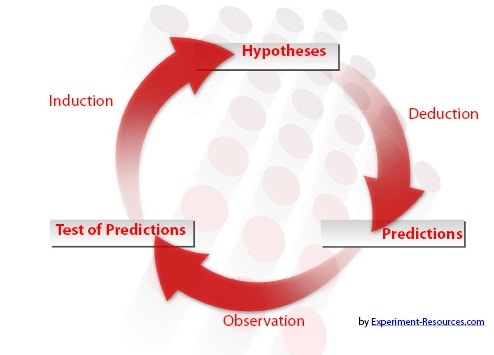

Scientific observation is the central element of scientific method or process. The core skill of scientist is to make observation.
Observation consists of receiving knowledge of the outside world through our senses, or recording information using scientific tools and instruments. Any data recorded during an experiment [3] can be called an observation.
A scientific process or scientific method requires observations of nature and formulating and testing the hypothesis. It consists of following four steps.

Make notes as you answer these questions
To make an observation you must look closely and notice details.
Now develop a question about what you see going on…
HYPOTHESIS: "Cats will play with cats of same color as theirs"
One important thing to note is that human senses are subject to errors [10] in perception e.g., optical illusions which can results in erroneous scientific observation [11]. This is why scientific instruments [12] were developed to improve and magnify human powers of observations like microscopes, cameras, telescopes, weight scales, computers, oscilloscopes, radio receivers etc.
Links
[1] https://explorable.com/scientific-observation
[2] https://explorable.com/
[3] https://explorable.com/conducting-an-experiment
[4] https://explorable.com/defining-a-research-problem
[5] https://explorable.com/research-hypothesis
[6] https://explorable.com/observational-study
[7] https://explorable.com/field-experiments
[8] https://explorable.com/drawing-conclusions
[9] https://explorable.com/social-science-subjects
[10] https://explorable.com/experimental-error
[11] http://en.wikipedia.org/wiki/Observation#Observation_in_science
[12] https://explorable.com/scientific-measurements